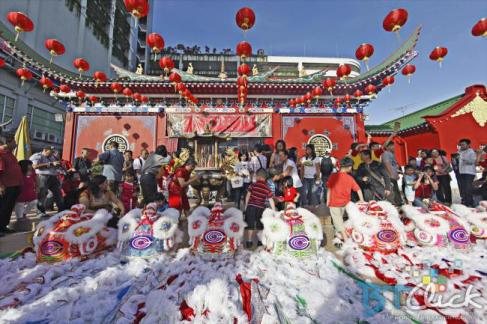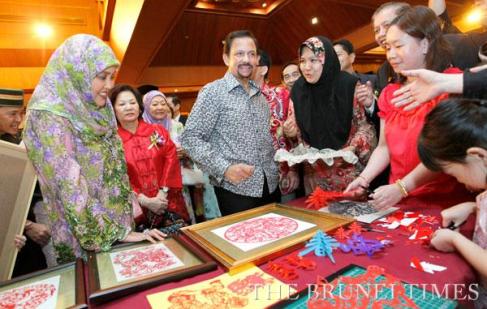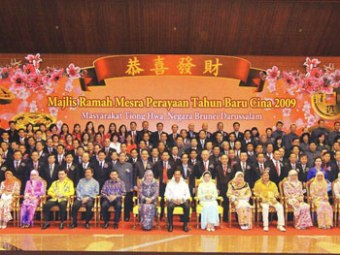
Photo: Malay Mail Online
Jewel Topsfield and Karuni Rompies
JAKARTA
Maverick Jakarta Governor Basuki Tjahaja Purnama, or Ahok, as he is known, has never had a filter. Impulsive and polarising, the city’s first openly Christian and ethnic Chinese governor – a double minority in Indonesia – seems to court controversy.
He questioned a ban on beer sales in mini markets – “no one has ever died from from drinking beer” – suggested schools should not compel girls to wear hijab, insisted he needed no support from political parties and antagonised the urban poor with mass forced evictions.
“If only there were some magic tape to put [over his mouth] so that he would talk as we hope,” former Indonesian president Megawati Soekarnoputri reportedly lamented at a meeting before her party announced it would endorse him in next February’s gubernatorial elections. “But there’s no such thing.”
For all this, the feisty, straight-talking governor is remarkably popular. Ahok, the former deputy governor, assumed the top role in 2014, when his predecessor Joko Widodo was elected president of Indonesia. His no-nonsense efficiency and tough stance on corruptionstruck a chord with voters, more than 95 per cent of whom are Muslim.
Ahok overhauled the stodgy bureaucracy, launched a smartphone app called Qlue which allowed Jakartans to report flood, crime, fire or waste, and worked on reducing floods and improving the city’s lamentable public transport.
The polls suggest he will be hard to beat: Poltracking Indonesia put his popularity at 92.56 per cent and his electability at 40.77 per cent in September.
But just days before the official election campaign begins on October 26, Ahok is being investigated by police over claims he defamed a verse in the Koran.
Prior to the alleged blasphemy, some Islamic groups had urged voters not to re-elect Ahok, citing verse 51 from the fifth sura or chapter of the Koran, al-Ma’ida, which some interpret as prohibiting Muslims from living under the leadership of a non-Muslim. Others say the scripture should be understood in its context – a time of war – and not interpreted literally.
In recorded remarks to a group of fishermen that went viral, Ahok suggested that some Muslims were “deceived” by al-Ma’ida 51. The comments caused outrage.
Ahok apologised and insisted he was not criticising the Koranic verse but those who used it to attack him.
But on Friday thousands of hardline Muslims took to the streets, calling on police to process the case. The maximum penalty for blasphemy in Indonesia is five years’ jail.
“The investigation is still going on,” Ari Dono Sukmanto, the head of the national police’s Criminal Investigations Department, told Fairfax Media. “We are now transcribing from the video what was actually said, what actually happened.”
Sukmanto said Ahok would be summoned for questioning: “Everybody is equal before the law and we will need his explanation over what has happened for clarification.”
The two largest Islamic organisations in the country – Muhammadiyah and Nahdlatul Ulama (NU) – have stressed that they have no problem with a Muslim voting for a non-Muslim.
Masdur Anwar, the deputy secretary of the Jakarta chapter of NU, does not believe Ahok set out to insult Islam.
“It is impossible that he deliberately did it because it would be suicidal for him,” Anwar told Fairfax Media. “It was just a slip of the tongue. But I can understand those who think it was an insult. Perhaps it is an accumulated feeling [of resentment] about the way Ahok speaks. He is blunt and perhaps these folks couldn’t stand it any more.”
Anwar hopes police investigate the case quickly so the election campaign does not become sectarian.
An editorial in Tempo magazine says the Jakarta election will be a test of the maturity of the young democracy: “Just how far have people left behind primordial prejudices such as religion and race when they go to the polls next February?”
The gubernatorial election is a three-legged race. Ahok’s opponents are Agus Harimurti, the son of former president Susilo Bambang Yudhoyono, and former education minister Anies Baswedan, who was dumped in the last cabinet reshuffle. Both were surprise candidates: Agus is a political novice who left behind a promising 16-year military career.
The stakes are high. “The position of governor can, as Ahok’s predecessor Jokowi demonstrated, be a springboard for higher office at the national level,” La Trobe University senior lecturer Dirk Tomsa writes. “Indeed, whoever wins in Jakarta next year might well be expected to find himself in the running for a presidential, or more likely, vice-presidential ticket in 2019.”
The South Morning Herald
Wed, 19 October 2016

Photo: Fajarnews.com








